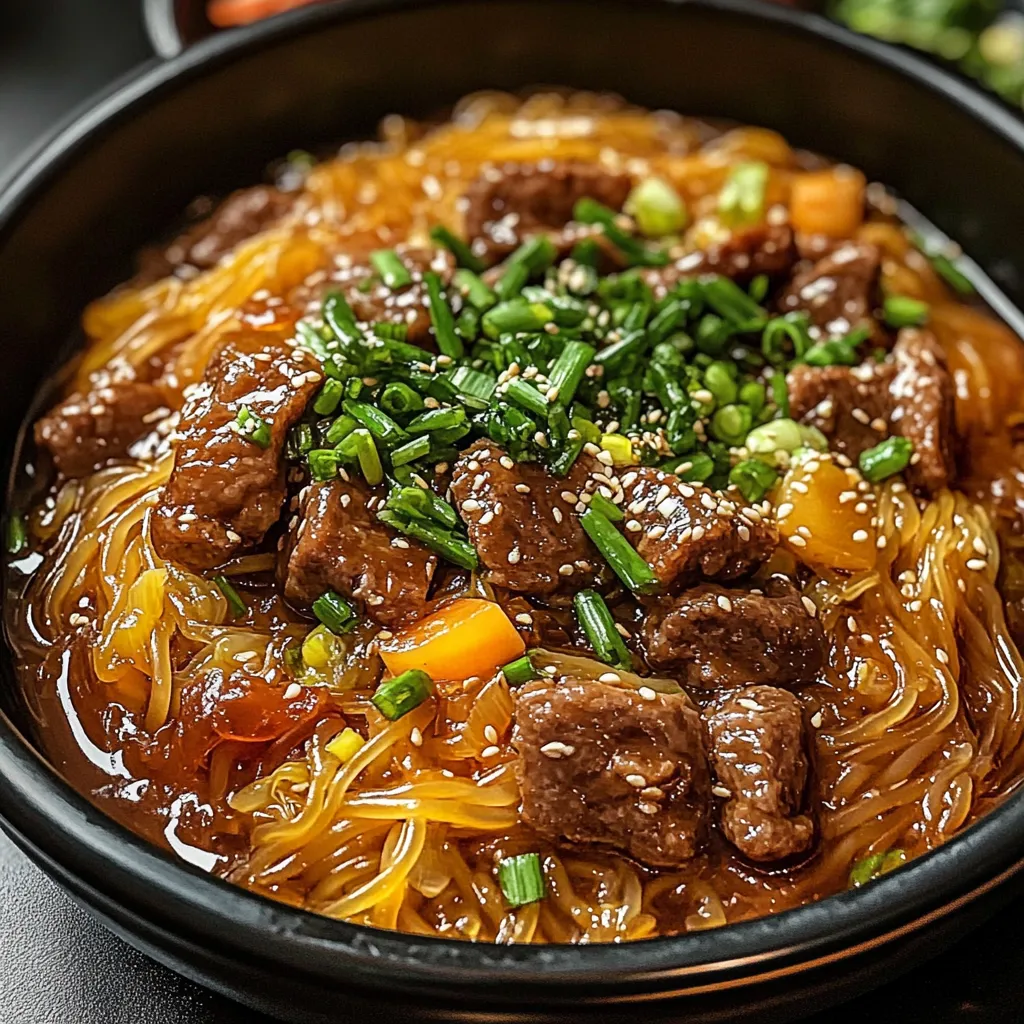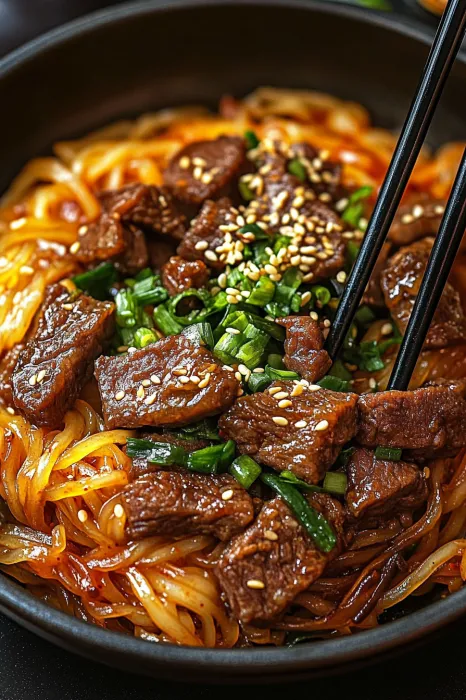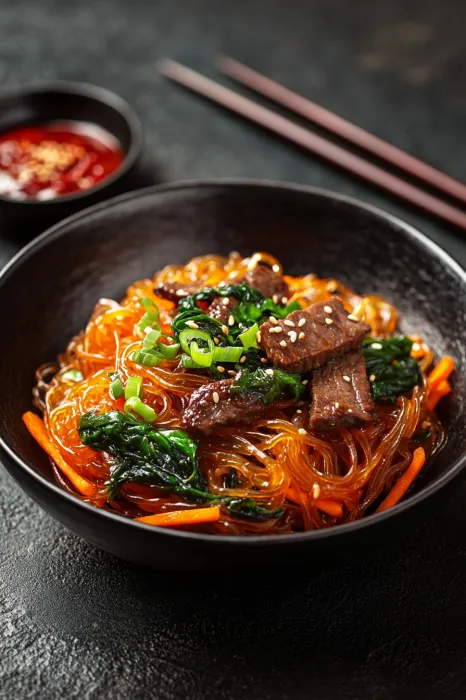 Pin it
Pin it
These bouncy Korean glass noodles come alive in a quick stir-fry with juicy beef, fresh veggies, and a mouthwatering sauce that'll have you craving more. The mix of soft noodles, meat and crunchy vegetables creates a meal that's both cozy and fancy enough to wow dinner guests.
I whipped up Japchae for the first time when friends came over who'd never tried Korean food, and now they won't let me cook anything else. The rainbow of colors and amazing texture combo makes everyone grab another helping.
Ingredients
- Sweet potato glass noodles: they're the star of the show with that springy bite that soaks up all the tasty sauce
- Thin sliced beef: brings hearty flavor and works magic with the sweet-savory sauce blend
- Carrots and onions: add a touch of sweetness and necessary snap to each bite
- Fresh spinach: throws in nice green balance and packs a nutritional punch
- Sesame oil: gives that unmistakable Korean taste you just can't fake
- Soy sauce: brings the savory depth that pulls everything into harmony
- Brown sugar: cuts through the saltiness with just enough sweetness
- Green onions: bring brightness and color as both cooking ingredient and finishing touch
Step-by-Step Instructions
- Prepare the Noodles:
- Get a big pot of water bubbling hot and add a splash of olive oil so nothing sticks together. Toss in your sweet potato noodles and let them cook for about 5-6 minutes until they turn see-through and chewy but still have some bounce. Dump them into a colander right away and run cold water over them to stop them cooking and keep them from getting mushy.
- Cook the Protein:
- Get your skillet super hot. Throw in those thin beef slices and keep them moving as they cook until you see the color change and edges start browning. While they're cooking, pour in half of your soy sauce, sesame oil and brown sugar mix. This will give the meat amazing flavor as it slightly caramelizes. Take it off the heat once it's done but still juicy, usually 3-4 minutes tops.
- Sauté the Vegetables:
- Grab another big skillet and warm up some olive oil over medium-high heat. Throw in your carrot strips and let them cook about 2 minutes before adding the sliced onions. Keep cooking until everything starts getting soft but still has some snap to it. Pour in the rest of your soy sauce, sesame oil and sugar mix. Add your crushed garlic and half the green onions, and keep stirring for another minute so everything gets fragrant without burning.
- Combine Everything:
- Toss the fresh spinach into your veggie mix and stir just enough to make the leaves start wilting. Grab a big mixing bowl and dump in your cooked noodles, seasoned beef, and all those veggies. Use tongs or chopsticks to lift and mix everything really well so the sauce coats everything evenly. The leftover heat will finish cooking it all perfectly.
 Pin it
Pin it
I love watching those hard white noodles change into shiny, clear strands that soak up all the amazing flavors. My Korean buddy taught me that good Japchae needs that perfect sweet-savory balance where you can't tell which one's stronger.
True Korean Cooking Secrets
The old-school Korean way of making Japchae means cooking everything on its own to keep all the textures and flavors standing out. This recipe cuts some corners, but you can go full traditional by cooking each veggie separately, adding a touch of soy sauce and sesame oil to each, then mixing it all at the end.
Storage and Reheating
Japchae keeps really well in the fridge for up to 4 days if you put it in a sealed container. It actually tastes better the next day as the flavors mingle overnight. When you want to eat leftovers, just warm it up quickly in the microwave or toss it in a hot pan with a tiny bit of sesame oil to wake up all those flavors and textures.
Tasty Companions
This flexible dish works as your main meal but also fits in perfectly alongside Korean BBQ or as part of a bigger Asian food spread. For a complete Korean dinner, serve it with some kimchi, a basic soup, and a side of rice. Japchae's sweet-savory combo also goes down great with a cold beer or some traditional Korean rice wine.
 Pin it
Pin it
Frequently Asked Questions
- → What are glass noodles made of?
These chewy noodles are crafted from sweet potato starch, popular in Korean dishes for their translucent look and texture.
- → Can I use something else instead of beef?
Sure, swap the beef for shrimp, tofu, chicken, or keep it vegetarian by leaving it out entirely.
- → How can I stop noodles sticking together?
Rinse noodles with cold water after cooking, then toss them with a dab of sesame oil to keep them separate.
- → Is Japchae gluten-free?
Simply use tamari instead of regular soy sauce to make this dish gluten-free.
- → Which veggies taste best in Japchae?
Carrots, onions, spinach, and green onions are classics, but mushrooms or bell peppers work just as well.
